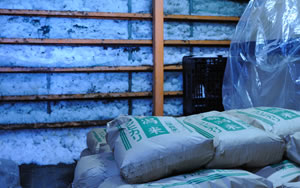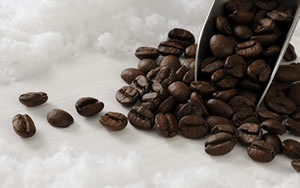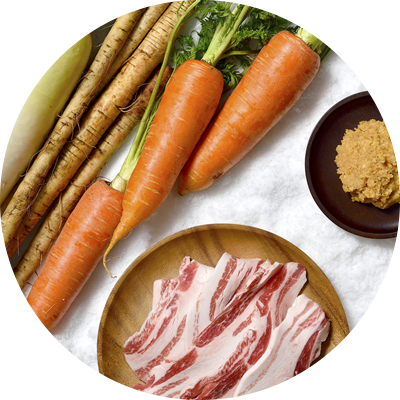These are Niigata specialties fostered in Yukimuro.
In Echigo Yukimuro, flavorful and delicious products such as Yukimuro coffee,
Yukimuro meat, and Yukimuro fishes are ripened.
ECHIGO YUKIMUROYA
Secret of ~Yukimuro~
Snow Room
What is YUKIMURO

Storing food by a natural refrigerator using the power of snow is a wisdom from the history
of the snow district. Inside is an environment with a standard temperature of 0℃ with humidity of over 90%. Having no electric vibration and any influence by neither light nor dryness, taste is improved with freshness maintained.
Results of Yukimuro storage and snow aging
Rice and vegetables is sweeted by saccharfication, and meat becomes a high quality aged meat with less drip. A research has proved that the unpleasant smell(aldehyde) that comes out when aging sake and coffee is able to be decreased by snow.


Features of the Yukimuro
❶Environment with certain low temperature and high-humidity can be retained throughout a year
Not matter it is 35 degrees in the middle of summer or -8 degrees in the winter, the temperature inside the Yukimuro is certain. A Yukimuro can maintain 0 degree or 5 degrees depending on its structure, but its internal temperature stays constant throughout the year. In order to maintain the average temperature of 4.8 degrees, a refrigerator has to use the thermostat and a fluctuation of temperature between 10 degrees to -1 degree will be caused. The difference of temperature makes cells of food easier to be damaged, and the delicious taste will also be more difficult to maintain. Furthermore, the Yukimuro can maintain a high-humidity environment with more than 90% humidity. By storing food in a high-humidity space, the freshness can be restrained by preventing from drying out. Compared to the low-humidity refrigerator, Yukimuro with low temperature and high humidity has an overwhelming freshness retaining capability and it becomes possible to retain the freshness of food almost to its original state.
❷Stress-free ripening that is not affected by vibration and
light
Since the natural energy of snow is taken advantage in a Yukimuro, there is no vibration of electricity. Also, it will not be affected by the change of light and temperature as well that happens on refrigerators at the time of opening and closing doors. This state that is not affected by external factors is called "seichi". It is said that food in the seichi state can have a better ripening due to less stress.

❸Changes in taste due to ripening
Among foods that have experience good ripening in a seichi state, changes in taste can take place on some of them. For example, vegetables and grains such as rice change the starch inside them to sugar, in order to protect themselves to be frozen. This reaction is called saccharification phenomenon which makes foods become sweet. Also, changes in taste such as foreign flavors are removed and bitter taste is inhibited will also happen on some foods. Since ancient times, "snow storage (Secchuchozo)" has always used to refer famous liquor, and various changes in taste will happen and bring a mysterious taste and mellow and thick texture. In order to numerically analyze the changes of taste brought by snow storage, component research with the cooperation of various academic research institutions is going on.
❹Antioxidation through degradation prevention and
respiration suppression due to low temperature
For foods placed in low-temperature Yukimuro especially whose cells are still alive, the respiration will be suppressed to withstand coldness. This state called petit hibernation can reduce the degradation and oxidation of foods.

❺Utilization of the snow energy and coexistence with nature
Yukimuro is the reuse of snow as well as the recycle of natural energy. Snow is a troublesome thing for living, but the idea of "snow utilization = using snow for coexistence" has been developed in the snow country Niigata. Yukimuro were nearly given up about 50 years ago due to the development of electric refrigerators, but this situation has changed greatly now. By using 1 ton of snow, it is said that 10 liters of oil and 30 Kg of CO2 can be reduced. The annual amount of snow used in a Yukimuro is about 400 to 700 tons. That is a considerable amount of oil and CO2 reduction.


